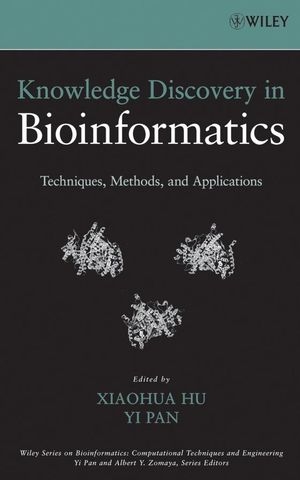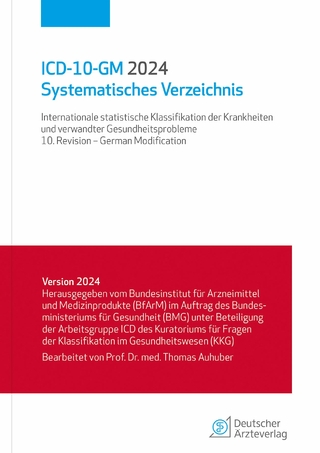
Knowledge Discovery in Bioinformatics
Wiley-Interscience (Verlag)
978-0-471-77796-0 (ISBN)
- Titel z.Zt. nicht lieferbar
- Versandkostenfrei innerhalb Deutschlands
- Auch auf Rechnung
- Verfügbarkeit in der Filiale vor Ort prüfen
- Artikel merken
The purpose of this edited book is to bring together the ideas and findings of data mining researchers and bioinformaticians by discussing cutting-edge research topics such as, gene expressions, protein/RNA structure prediction, phylogenetics, sequence and structural motifs, genomics and proteomics, gene findings, drug design, RNAi and microRNA analysis, text mining in bioinformatics, modelling of biochemical pathways, biomedical ontologies, system biology and pathways, and biological database management.
Xiaohua Hu, PhD, is Assistant Professor of Computer Science in the College of Information Science and Technology at Drexel University. His research has been published in such journals as IEEE Computer, Knowledge and Information Systems, Journal of Intelligent Systems, and the International Journal of Applied Intelligence. Yi Pan, PhD, is Chair and Professor of Computer Science at Georgia State University. His pioneering work in computing using reconfigurable optical buses has been cited by researchers around the world. Dr. Pan is co-holder of three United States patents (pending) and five provisional patents.
Contributors. Preface.
1 Current Methods for Protein Secondary-Structure Prediction Based on Support Vector Machines (Hae-Jin Hu, Robert W. Harrison, Phang C. Tai, and Yi Pan).
1.2 Support Vector Machine Method.
1.3 Performance Comparison of SVM Methods.
1.4 Discussion and Conclusions.
2 Comparison of Seven Methods for Mining Hidden Links (Xiaohua Hu, Xiaodan Zhang, and Xiaohua Zhou).
2.1 Analysis of the Literature on Raynaud’s Disease.
2.2 Related Work.
2.3 Methods.
2.4 Experiment Results and Analysis.
2.5 Discussion and Conclusions.
3 Voting Scheme–Based Evolutionary Kernel Machines for Drug Activity Comparisons (Bo Jin and Yan-Qing Zhang).
3.1 Granular Kernel and Kernel Tree Design.
3.2 GKTSESs.
3.3 Evolutionary Voting Kernel Machines.
3.4 Simulations.
3.5 Conclusions and Future Work.
4 Bioinformatics Analyses of Arabidopsis thaliana Tiling Array Expression Data (Trupti Joshi, Jinrong Wan, Curtis J. Palm, Kara Juneau, Ron Davis, Audrey Southwick, Katrina M. Ramonell, Gary Stacey, and Dong Xu).
4.1 Tiling Array Design and Data Description.
4.2 Ontology Analyses.
4.3 Antisense Regulation Identification.
4.4 Correlated Expression Between Two DNA Strands.
4.5 Identification of Nonprotein Coding mRNA.
4.6 Summary.
5 Identification of Marker Genes from High-Dimensional Microarray Data for Cancer Classification (Jiexun Li, Hua Su, and Hsinchun Chen).
5.1 Feature Selection.
5.2 Gene Selection.
5.3 Comparative Study of Gene Selection Methods.
5.4 Conclusions and Discussion.
6 Patient Survival Prediction from Gene Expression Data (Huiqing Liu, Limsoon Wong, and Ying Xu).
6.1 General Methods.
6.2 Applications.
6.3 Incorporating Data Mining Techniques to Survival Prediction.
6.4 Selection of Extreme Patient Samples.
6.5 Summary and Concluding Remarks.
7 RNA Interference and microRNA (Shibin Qiu and Terran Lane).
7.1 Mechanisms and Applications of RNA Interference.
7.2 Specificity of RNA Interference.
7.3 Computational Methods for microRNAs.
7.4 siRNA Silencing Efficacy.
7.5 Summary and Open Questions.
8 Protein Structure Prediction Using String Kernels (Huzefa Rangwala, Kevin DeRonne, and George Karypis).
8.1 Protein Structure: Granularities.
8.2 Learning from Data.
8.3 Structure Prediction: Capturing the Right Signals.
8.4 Secondary-Structure Prediction.
8.5 Remote Homology and Fold Prediction.
8.6 Concluding Remarks.
9 Public Genomic Databases: Data Representation, Storage, and Access (Andrew Robinson, Wenny Rahayu, and David Taniar).
9.1 Data Representation.
9.2 Data Storage.
9.3 Data Access.
9.4 Discussion.
9.5 Conclusions.
10 Automatic Query Expansion with Keyphrases and POS Phrase Categorization for Effective Biomedical Text Mining (Min Song and Il-Yeol Song).
10.1 Keyphrase Extraction-Based Pseudo-Relevance Feedback.
10.2 Query Expansion with WordNet.
10.3 Experiments on Medline Data Sets.
10.4 Conclusions.
11 Evolutionary Dynamics of Protein–Protein Interactions (L. S. Swapna, B. Offmann, and N. Srinivasan).
11.1 Class I Glutamine Amidotransferase–Like Superfamily.
11.2 Drifts in Interfaces of Close Homologs.
11.3 Drifts in Interfaces of Divergent Members.
11.4 Drifts in Interfaces at Extreme Divergence.
11.5 Conclusions.
12 On Comparing and Visualizing RNA Secondary Structures (Jason T. L. Wang, Dongrong Wen, and Jianghui Liu).
12.1 Background.
12.2 RSmatch.
12.3 RSview.
12.4 Conclusions.
13 Integrative Analysis of Yeast Protein Translation Networks (Daniel D. Wu and Xiaohua Hu).
13.1 Protein Biosynthesis and Translation.
13.2 Methods.
13.3 Results.
13.4 Conclusions.
14 Identification of Transmembrane Proteins Using Variants of the Self-Organizing Feature Map Algorithm (Mary Qu Yang, Jack Y. Yang, and Craig W. Codrington).
14.1 Physiochemical Analysis of Proteins.
14.2 Variants of the SOM Algorithm.
14.3 Results.
14.4 Discussion and Conclusions.
15 TRICLUSTER: Mining Coherent Clusters in Three-Dimensional Microarray Data (Lizhuang Zhao and Mohammed J. Zaki).
15.1 Preliminary Concepts.
15.2 Related Work.
15.3 The TRICLUSTER Algorithm.
15.4 Experiments.
15.5 Conclusions.
16 Clustering Methods in a Protein–Protein Interaction Network (Chuan Lin, Young-Rae Cho, Woo-Chang Hwang, Pengjun Pei, and Aidong Zhang).
16.1 Protein–Protein Interaction.
16.2 Properties of PPI Networks.
16.3 Clustering Approaches.
16.4 Validation.
16.5 Conclusions.
References.
Index.
| Erscheint lt. Verlag | 6.7.2007 |
|---|---|
| Reihe/Serie | Wiley Series in Bioinformatics |
| Mitarbeit |
Herausgeber (Serie): Albert Y. Zomaya |
| Zusatzinfo | Drawings: 119 B&W, 0 Color; Screen captures: 5 B&W, 0 Color |
| Sprache | englisch |
| Maße | 163 x 241 mm |
| Gewicht | 703 g |
| Themenwelt | Informatik ► Weitere Themen ► Bioinformatik |
| Mathematik / Informatik ► Mathematik | |
| Naturwissenschaften ► Biologie ► Genetik / Molekularbiologie | |
| ISBN-10 | 0-471-77796-X / 047177796X |
| ISBN-13 | 978-0-471-77796-0 / 9780471777960 |
| Zustand | Neuware |
| Haben Sie eine Frage zum Produkt? |
aus dem Bereich


